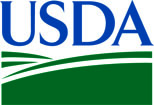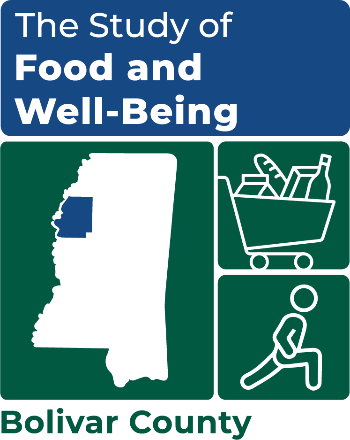Business
Understanding the Relationship Between Poverty, Well-Being, and Food Security
Q2. Focus Group Discussion Guide
Business
OMB: 0584-0682
Appendix Q2. Focus Group Discussion Guide

OMB
Number: 0584-XXXX
Expiration
Date: XX/XX/20XX
S

 TUDY
OF FOOD AND WELL-BEING
TUDY
OF FOOD AND WELL-BEING
DISCUSSION GUIDE FOR SERVICE PROVIDER Organizations
Date of discussion: ___________________ Location: _____________________________
Number of participants: ________________ Number of Organizations:________________
Facilitator: Facilitator Support:
Start Time: End Time:
Thank you for coming to this group meeting of organizations that provide services and assistance to individuals and families living in [COUNTY NAME]. My name is [NAME], and my co-worker is [NAME], and we work for Mathematica, an independent research organization. Today’s group discussion is being conducted as part of a larger study that we are doing for the United States Department of Agriculture, Food and Nutrition Service.
The study will provide information on how poverty affects well-being and food insecurity in [COUNTY NAME] and in five other counties in other States. Your county was chosen to be part of the study due to the long-term poverty that exists here. Through this study, we seek to gain a better understanding of how to help families access nutritious, affordable food and to improve programs that aim to eliminate hunger.
We are eager to learn more about your work in supporting families in [COUNTY NAME]. We appreciate the opportunity to benefit from your first-hand perspective on the long-term poverty in your community and the needs of the families you serve. We want to hear your thoughts about what contributes to the well-being of community members, the strengths of the community and its families. We also want to gain a deeper understanding of factors that contribute to food insecurity and poverty in the community, and the challenges that families face. We will also be talking at length to some family members in the community; our discussion today will enable us to get a better and more nuanced understanding of some of the long-standing strengths and challenges in the community.
We also know that the COVID pandemic has added another layer of stresses and challenges for the community as a whole as well and undoubtedly for your organization as well. That said, we would really like to first focus the discussion on pre-COVID related factors that have contributed to poverty, food insecurity and well-being in the community. There will also be opportunity at different points in the discussion to reflect on the impact of the COVID pandemic on these important issues.
This information is being
collected to assist the Food and Nutrition Service (FNS) in
understanding the interrelated factors that affect food insecurity
and poverty. This is a voluntary collection and FNS will use the
information to aid in the administration of the Supplemental
Nutrition Assistance Program. This collection does request
personally identifiable information under the Privacy Act of 1974.
According to the Paperwork Reduction Act of 1995, an agency may not
conduct or sponsor, and a person is not required to respond to, a
collection of information unless it displays a valid OMB control
number. The valid OMB control number for this information collection
is 0584-[xxxx]. The time required to complete this information
collection is estimated to average 90 minutes (1.5000 hours) per
response, including the time for reviewing instructions, searching
existing data sources, gathering and maintaining the data needed,
and completing and reviewing the collection of information. Send
comments regarding this burden estimate or any other aspect of this
collection of information, including suggestions for reducing this
burden, to: U.S. Department of Agriculture, Food and Nutrition
Service, Office of Policy Support, 1320 Braddock Place, 5th Floor,
Alexandria, VA 22306 ATTN: PRA (0584-xxxx). Do not return the
completed form to this address.
I wanted to go over a few points to help facilitate our discussion today:
I am going to lead the discussion by asking the group several questions. It’s really important for everyone to speak up and to give everyone a chance to talk. Whenever possible, let’s try to share talking time so that people talk about the same amount of time. It will also help us if you speak clearly and one at a time.
There are no right or wrong answers to the questions we will ask. I ask that none of you share what you hear with others outside the group so that all of you are more comfortable and candid in your responses.
I would like to use a recorder during our discussion. This is so I can listen to it later when we write up and transcribe the notes. We don’t care who said what, but we do want to make sure we accurately record what you said. If you want to say something that you don’t want recorded, please let me know, and I will be glad to pause the machine. Does anybody have any objections to participating or to my recording our discussion?
We will destroy the recording once we have finished writing the report.
The session will last about 1½ hours, and we will not take any formal breaks. But please feel free to get up at any time to stretch, use the restroom, or help yourselves to something to eat or drink.
Are there any questions before we get started? OK then, let’s start! [TURN ON RECORDER]
A. Introductions
First, let’s go around the room: Please introduce yourself, tell us your first name, the organization you represent and the primary services it provides, and use one word to describe a strength of the community and one word to describe a key ongoing challenge experienced by the community. Also tell us your favorite thing about living in [COUNTY NAME].
[MODERATOR NOTE: it is helpful to go in order of how the group is sitting. This will allow the transcriptionist to label responses by person.]
B. Defining Community
We recognize that “community” means different things to different people. For the purposes of our discussion, we are focusing on [COUNTY NAME] as a community. It would be helpful to spend a little time upfront to hear how you all think about and define community. In particular:
How would each of you define and describe the community where the families you serve live and work? Probe for geographic area, target population, economic/social/cultural characteristics and contexts.
[MODERATOR NOTE: Briefly summarize the discussion for any common understanding/ definitions of community for today’s meeting]
C. Neighborhood and Community Contexts
What do you think causes a significant share of families in [COUNTY NAME] to experience poverty through multiple generations of their family (i.e., long-term poverty)? Probe for joblessness, lack of housing, limited access to food, housing affordability, lack of access to jobs or livelihoods, lack of high-quality education, lack of healthcare, lack of transportation, lack of childcare, high rates of incarceration, substance abuse.
Are there any cultural or historical events or characteristics that may have contributed to long-term poverty in the community that are important for us to understand? For example, a major employer or industry coming to or leaving the area, institutional racism, lack of social capital, community has never had any resources, or something else that changed the county for better or worse.
What contributes to food insecurity for families in the community? Which of these reasons or combination of reasons do you find to be most prevalent among families in the community? Probe for lack of jobs/income, access to healthy, affordable food, lack of access to retail/supermarket, lack of transportation, food deserts, not qualifying for federal food programs, lack of food banks.
Now I’d like to hear more about the families you serve. What strengths do families in the community possess that help them cope on a daily basis and make it through tough times? What are the key challenges that families in the community face? Probe for what resources families have and do not have.
What about marginalized groups in the community? What particular difficulties do they face in making it through tough times?
Of all the circumstances, conditions, and characteristics that have been raised thus far, what do you think are the biggest contributors to long-term poverty in this area?
How has the COVID pandemic impacted or exacerbated these longer-term trends and issues related to poverty and food insecurity?
C. Resource Environment: Services and Gaps in Service
Now, I’d like to focus the discussion on services and resources available in the community for families and individuals living in poverty and who may experience food insecurity and hunger.
Thinking about the range of services and resources available for these families and individuals in this community, what types of needed services and resources are readily available?
Where do you see the biggest gaps between the types or level of services or resources that are needed versus what is available to families that could reduce poverty and food insecurity, and improve their well-being. What additional services or resources are needed?
Are there benefits or services available that families want but can’t get? What prevents them from getting these benefits/services? What are the most common problems that families encounter when trying to obtain assistance/services? Probe for lack of transportation, cost of transportation (e.g., gas), when/where services were offered, childcare problems, ineligibility]
Are there any types of services or assistance for families that just don’t exist in the community that residents might benefit from?
In thinking about the last ten years, what improvement or declines have you seen in addressing poverty? What worked to improve the lives of those living in poverty? What didn’t work? What things made your job of helping those in poverty easier or harder?
How has the COVID pandemic impacted the need and demand for services? The availability and access to these services?
What do you think would be the best way to improve service gaps in the county?
D. Food Environment
As food insecurity is a central focus of our study, we are interested in learning more about characteristics related to the availability of and access to affordable and nutritious food in your community.
Tell me about the food environment in your county.
Where do families you serve typically get their groceries? Probe for grocery stores, gas stations or convenient stores, dollar stores or other similar retailers that don’t specialize in groceries, pharmacies, farmers markets, food banks or pantries.
Tell me about the quality and selection of foods at these places. Tell me about the affordability of food/groceries at these places.
How easy or hard is it to get to these places? Describe how the families you serve access these places. How far do they have to travel? Probe: do families you serve have reliable cars? Is there public transportation in the community? How reliable and convenient is it?
What have you heard or observed about families’ perceptions/experiences with obtaining adequate food assistance pre-pandemic? How has that changed since the onset of the COVID pandemic?
What do you think are the best ways to improve the food environment in the county?
H. Wrap-up and Closing
What do you think it would really take to address/prevent/stop multigenerational poverty in the community?
Is there anything else that you would like to add or are there other thoughts you had during our discussion that you would like to mention before we finish?
This discussion has been very useful in helping us better understand the community context that helps shape the lives of families in [COUNTY NAME]. Thank you for the work you do and for taking out time from your busy lives to come here and contribute today. We will keep your organization updated on the progress of our study and share the study findings when they become available.
| File Type | application/vnd.openxmlformats-officedocument.wordprocessingml.document |
| File Modified | 0000-00-00 |
| File Created | 0000-00-00 |
© 2026 OMB.report | Privacy Policy